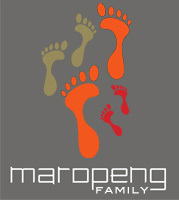Curating the exhibitions, caring for the staff – Lindsay Marshall

“For so long we didn’t know how much we had to be proud of,” says Lindsay Marshall, curator of Maropeng. “Now we have the opportunity to highlight and showcase the richness of our palaeontological and archaeological heritage, and Maropeng provides the platform where we can get the public interested.”
Having joined Maropeng in May 2007 as exhibition curator and human resources manager, Lindsay says: “This is the first time in 10 years that I have been able to do what I love, and Maropeng has provided that context for me.”
Lindsay is a Bachelor of Arts graduate from Wits University. With a degree in archaeology and social anthropology, an honours degree in archaeology, a post-graduate diploma in heritage studies, and several years of HR experience, she was ideally placed to take up her position at Maropeng.

Maropeng Curator Lindsay Marshall
“‘Curator’ is a good word for the dual-function that I fulfil on a day-to-day basis,” says Lindsay, “because it means ‘to look after’. I look after both the fossils and the people at Maropeng.”
As curator, Lindsay acts as a liaison between academics and Maropeng visitors, showcasing, highlighting and exposing their research, and sharing and publicising South Africa’s unparalleled archaeological and palaeontological heritage. “I wouldn’t call myself an archaeologist, or palaeontologist,” says Lindsay. “I am more of a facilitator, interested in the practical marketing of South Africa’s palaeontological and archaeological heritage.”
Her ultimate aim is to create a new generation of scientists. “I want children to leave Maropeng thinking, ‘I want to do that’, to spur youngsters on to study at university.”
Professor Francis Thackeray, director of the Institute for Human Evolution at University of the Witwatersrand and world-renowned palaeontologist, says: “Lindsay is enthusiastic about promoting heritage awareness. She is diligent and has an excellent background in matters relating to archaeology and palaeontology in South Africa. Maropeng can be proud of her.”
Erica Saunders, marketing manager of Maropeng, praises Marshall’s natural gift for imparting her enthusiasm when it comes to getting as many people as possible involved in the world of fossils. “Lindsay is passionate about getting things done properly,” Saunders says. “She plays the precarious role of making scientific information accessible to the general public, but at the same time upholding the scientific integrity of that information. Lindsay always manages to balance these views and she plays this difficult role very well.”
Tony Rubin, managing director of Maropeng, similarly commends Marshall’s work. “Lindsay’s relationship with the scientific community is critical in Maropeng maintaining credibility,” he says. “Her interactions with the scientific community and the exhibition committee are crucial to our functioning.”
“Lindsay is an absolute pleasure to work with,” continues Rubin. “She has a wonderful way of dealing with complicated issues and bringing them into layman’s terms.”
What Lindsay enjoys most about her job is the opportunity to work with such enthusiastic and dedicated people. She loves working with the Maropeng tour guides – whom she dubs “the voice of the exhibition” – and has found it so rewarding to see how they have grown.
The experience of training four new guides, and taking them from the point where they could not even say “Australopithecus”, to winning awards at the West Rand Tourism Awards, has been an inspiration to her.
In the future, Lindsay plans to continue to expand her role as curator and to develop Maropeng into one of the most popular visitor destinations in the country and Africa. In the light of South Africa’s past, where everything that Maropeng now showcases was hidden away, she emphasises the importance of continually making people aware of our common heritage.
“At Maropeng, children can learn what a common ancestor is and that we all originate in Africa,” Lindsay says.
“The Cradle of Humankind was declared a UNESCO World Heritage Site in 1999,” she continues. “What Maropeng does is to help us understand that if we look at our diversity, and strip away the exterior, we have characteristics that bind us all together – we are, essentially, all the same. And this heritage belongs to all of us.”
To read more of our staff profiles, please click on this link.